The £600,000 luxurious horseboxes adored by the who’s who of the equestrian world

In terms of monetary value, what is the most valuable cargo you have driven on the road? Few people are likely to have been in charge of a more expensive load than Michael McGowan, who for years transported one of the world’s greatest racehorses.
Frankel was unbeaten in 14 starts and has gone on to make millions of pounds at stud. McGowan, 55, was “travelling head lad” for the late Sir Henry Cecil, the renowned trainer. He drove the prize colt, at one point said to be worth £100 million, to races around the country during his epic winning streak.
Cecil, who was knighted by Queen Elizabeth II in 2011 for services to horse racing, had every confidence in his transport team. “He also knew the dangers of driving a horsebox,” says McGowan. “Motorists have very little understanding of how difficult it is, especially on corners when carrying a live animal that weighs half a ton.”
Transporting equestrian royalty is just as demanding when actual royalty is behind the wheel. Three-day eventer Zara Tindall is often seen leaving her Cotswolds farm driving a 26-ton horsebox. The late Queen’s granddaughter won an Olympic silver medal at London 2012 in the team event and is still a keen rider, now often with husband and former rugby international Mike Tindall at her side.

Her mother, the Princess Royal, won the prestigious Burghley three-day event in 1971, competed for Great Britain at the Olympic Games in 1976 and won multiple international medals. She is also an experienced horsebox driver and last year recounted how she feared one of her babies had become “wedged” when she tripped over in a horse lorry when she was heavily pregnant.

McGowan says that even on a motorway, car drivers need to take more care around horseboxes. “They need to leave a longer gap in front, so the driver can brake smoothly. The trouble is, I slow down to increase the gap and then another driver immediately overtakes and fills the space. It’s infuriating and dangerous.”
To move Frankel, McGowan used a 7½-ton horsebox, a popular lorry size for racehorse transport. However, for showjumpers and three-day eventers, who often need several horses at each competition, something a little larger – and inevitably a lot more expensive – is usually required.
In 1947, 14-year-old Brian Oakley was among the first to realise that where there’s horse muck, there’s brass. The teenager used carpentry skills he learnt at school to transform a £40 Ford chassis into a wooden horsebox. It later sold for £200 and launched a British industry now worth millions.
Seventy-six years on and Oakley Horseboxes employs more than 100 people at its UK headquarters in Ware, Hertfordshire. Top-end models such as the HGV-sized Supremacy cost in excess of £600,000 and pack enough bespoke features to put a limousine to shame.

The origins of the horsebox date back to 1836, a time when horses travelled to race meetings on foot. To keep his horse Elis fresh, Lord George Bentinck came up with a secret plan to ship the animal more than 200 miles to the St Leger horse race, in Doncaster, using a carriage pulled by a team of horses. It promptly won the race, at long odds.
The Rolls-Royce of horseboxes, Oakleys can today be found at the Royal Mews at Windsor Castle, and they have become the must-have horsey wheels for those who can afford it – including the sultan of Brunei, Formula 1 team bosses, celebrities, the King’s Troop and many police forces around the country.
Often based on a Scania, Volvo or Mercedes chassis, the enormous Supremacy measures almost 40ft long and has multiple configurations, lavishing comfort on both horse and rider. A luxurious living area of up to seven berths at the front can be combined with a rear stable area carrying just as many horses.
“There’s definitely a sense of oneupmanship in owning the best horsebox,” says Oakley spokesman Justin Bennett. “Owners go to events and see what somebody else has in their lorry and they want the same, or better. We’ve had orders for gold taps, horse mosaics in the shower and every shade of leather trim.”

Buyers can expect an 18-month waiting list for their hand-built stables on wheels – longer than that for the majority of premium cars – but one reward is that horseboxes also tend to hold their value. “Because the waiting list is so long, that can fuel demand. We are very busy,” says Bennett.
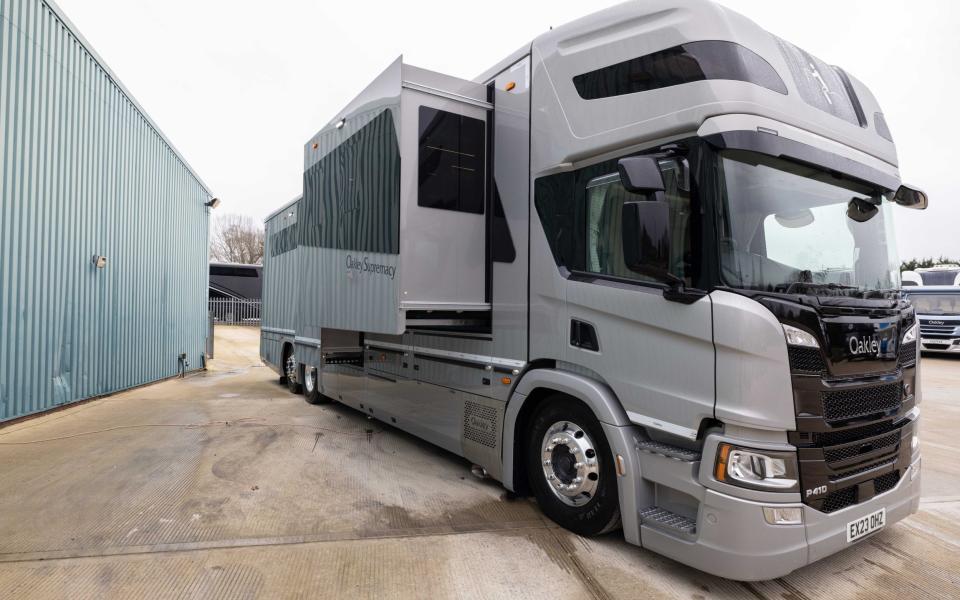
Olympic rider Peter Charles was a member of the British team that won gold at the 2012 games in London. The former European showjumping champion now mentors his son, Harry, who is part of the current national team.
“We have four horseboxes at our Hampshire farm, with another one under construction,” says Peter Charles. “It sounds excessive, but if Harry is competing in Switzerland and needs to ride at an event in London the next day, we have to send different horses to each venue.
“Modern horseboxes are vastly superior to the ones I remember as a kid. They are super-luxurious for the team, but more importantly they transport horses around with the minimum of stress and in the safest conditions.”
There’s no whiff of horse manure and sweaty jodhpurs when you step inside a Supremacy – it’s like entering a swanky, if compact, hotel suite. You go up electric folding stairs, key in a security code and enter the front living quarters. There’s nothing to suggest a herd of horses living just a few feet away towards the back.
A touchscreen control operates up to four slide-out sections to boost the living space, including one that contains a full-size shower in the bathroom. A curved LCD television screen with Sony PlayStation, Wi-Fi and surround sound hangs above the kitchen sink, set in a granite worktop.
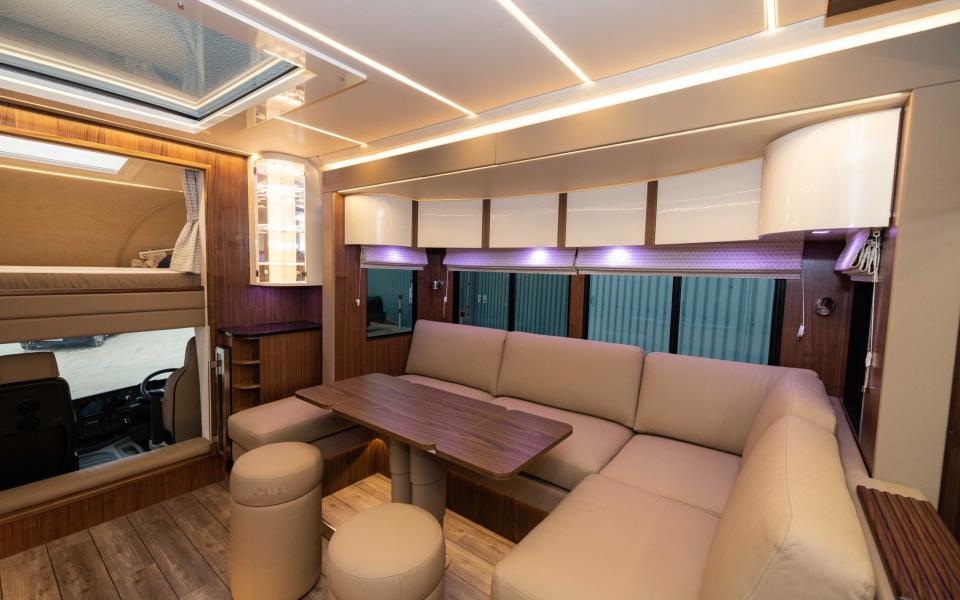
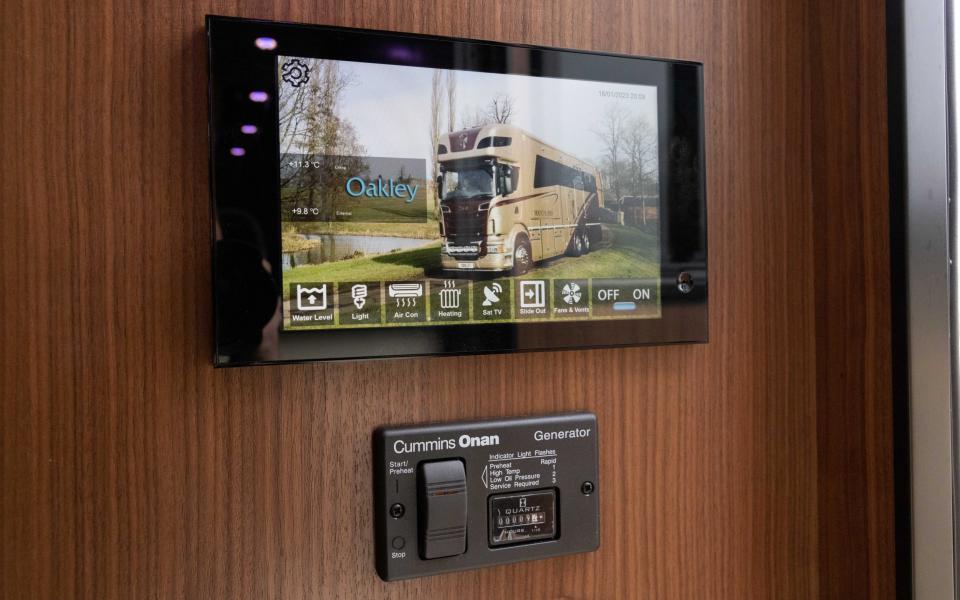
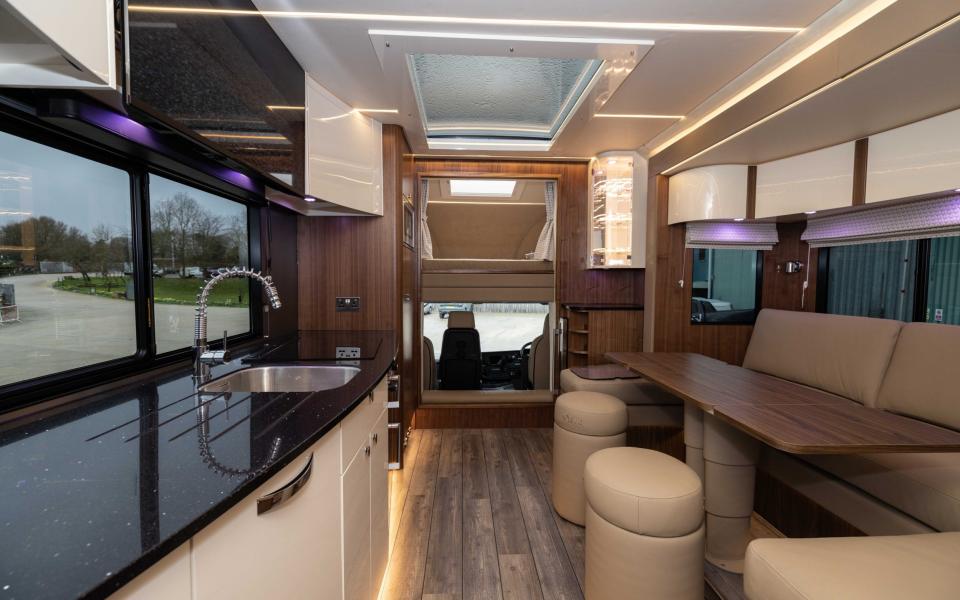
Underfloor heating revitalises tired feet after a long day in the saddle, while air-conditioning is ducted to every corner. Buyers can opt for a washing-machine and tumble-dryer combo, while outside a fridge-freezer dispenses perfectly chilled champagne to celebrate a winning round. A pull-out cooker and barbecue, with downlights and outdoor speakers, add to the ambience.
Far from being just a luxury camper van, the Supremacy can also house up to seven horses in air-conditioned comfort, standing on a cushioned rubber floor with protective kickboards. Water and feed systems provide the horse meals on wheels, while the entire area can be monitored from the driver’s cab by CCTV. A solarium is optional.
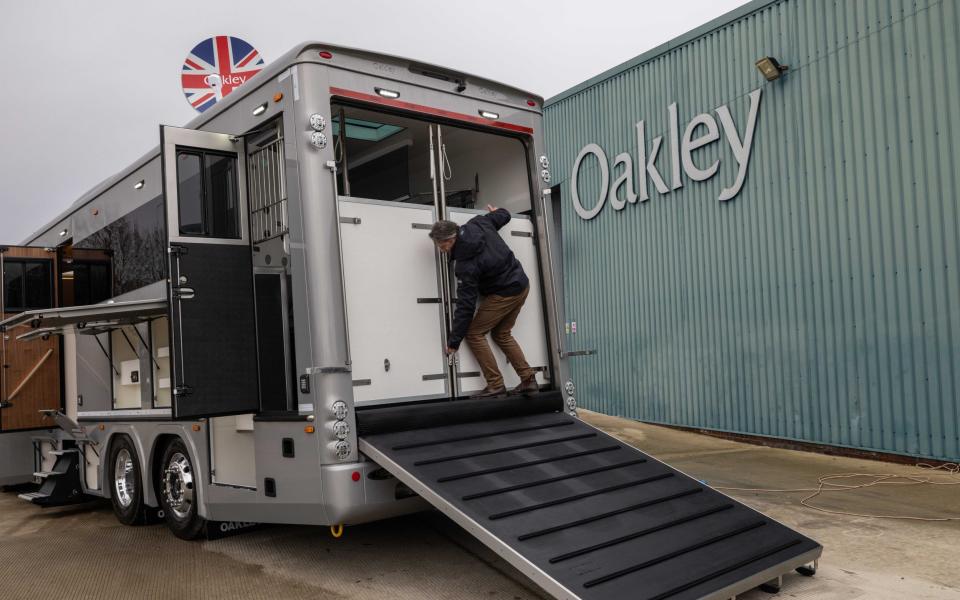
This particular example is based on Scania P410 running gear, an HGV with air suspension and powered by a 13-litre diesel engine producing 410bhp. As you sit in the spring-loaded driver’s seat, the sheer amount of bodywork initially seems intimidating, not least the height of more than 13ft and width of 8ft 4in – fine to manoeuvre around an open car park, but a B-road in the Cotswolds might prove more challenging.
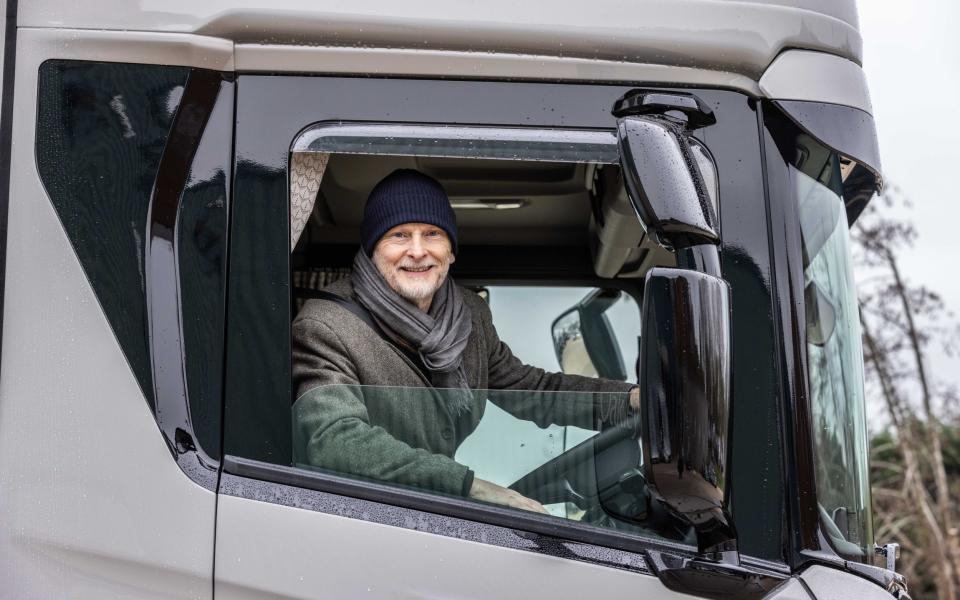
“I think most owners are surprised how easy it is to drive,” says Bennett. “Things have moved on since Mr Oakley saw his opportunity and, for once, bigger might actually be better.”

 Yahoo News
Yahoo News 
